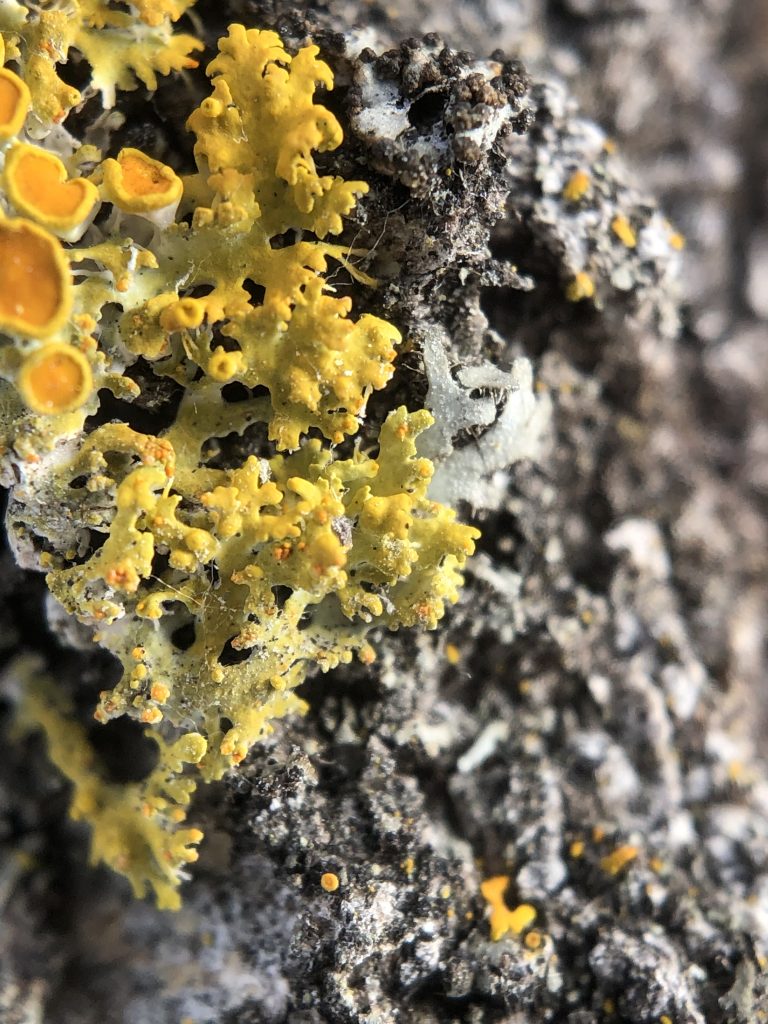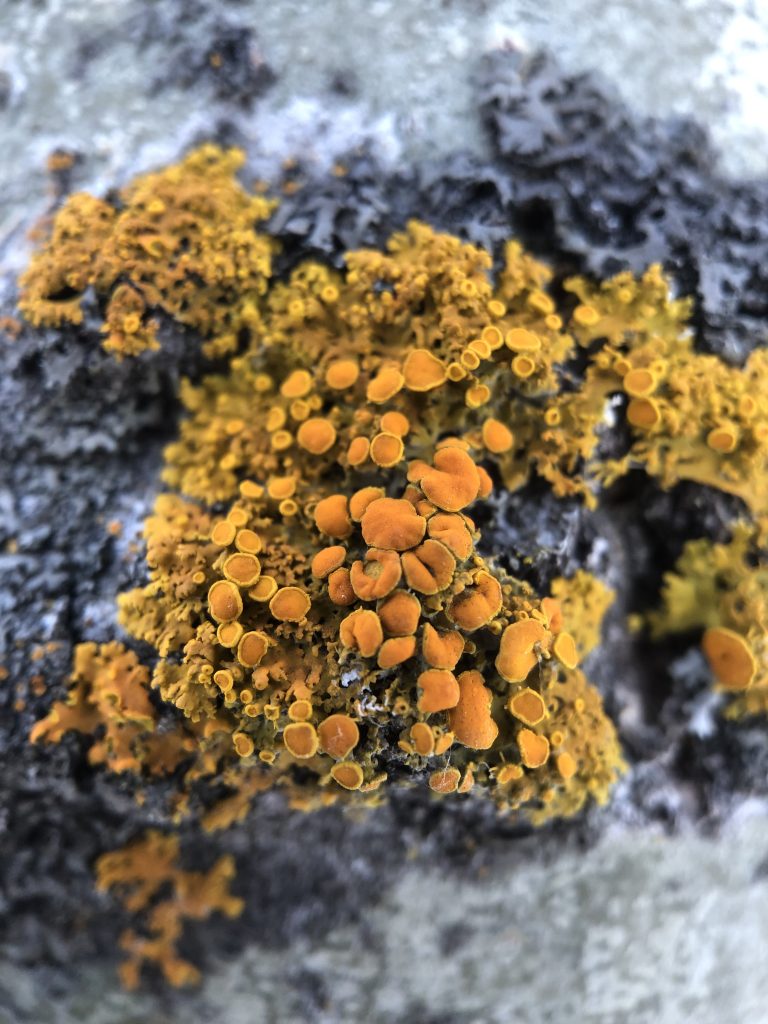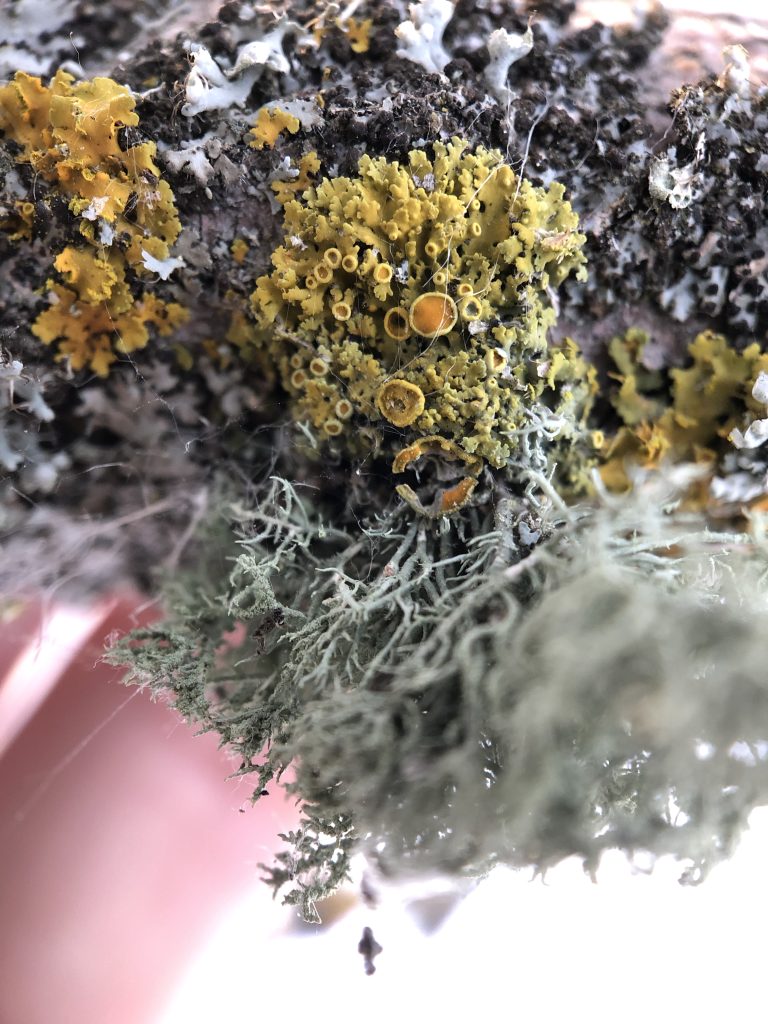Xanthomendoza hasseana (Räsänen) Søchting, Kärnefelt & S.Y. Kondr., 2002 & Xanthomendoza montana (L. Lindblom) Søchting, Kärnefelt & S.Y. Kondr., 2002
| Common name | Poplar Sunburst/Mountain Sunburst | |
|---|---|---|
| Code |
XANTHAS/XANTMON | |
| Field Characters | Small, leafy chlorolichen. Forming orange, fertile, appressed rosettes, these species typically have at least some apothecia and laminal, slightly protuberant orange pycnidia. No soredia. White rhizines often are visible around the edges of the overlapping, plane to convex lobes.
In the literature Xanthomendoza montana is differentiated from X. hasseana with difficulty by spore and septum size (Lindblom 1997). Measurements from Brodo 2016: X. montana spores (11.5–)12.5–15.5 × 5–7.5 μm, septum about one-third the length of the spore or less, 1.5–4 μm wide vs. X. hasseana spores 15–18 × 7.0–8.0(–9.5), septum more than one-third the length of the spore, 4–8.5 μm wide). In our experience, spores often show intermediate values or the spore size fits one species while the septum width fits the other. Elsewhere in North America these species can be differentiated by range, with X. montana restricted to the west and X. hasseana present across North America but apparently more common in the east. |
|
| Similar species |
Xanthomendoza fallax: sorediate, but sometimes confused because often also fertile.
Xanthoria polycqrpa: lacks rhizines and has a more compact growth habit. Based on our herbarium work, historically these species were misidentified as Xanthoria polycarpa in Alberta. |
|
| Ecology | Epiphytic, most commonly on Populus or Picea, or on downed wood. Occasional in the parkland, southern boreal, and grassland, rare in the foothills and mountain regions of Alberta. In Edmonton this species is an occasional tableland, parkland, and river valley and ravine system epiphyte (Haughland et al. 2022). | |
| Chemistry | Upper cortex PD-, K+ purple, C-, KC- (but difficult to discern due to K+ purple), UV- (variety of anthraquinones: parietin, fallacinal, emodin, teloschistin and parietinic acid by TLC according to Lindblom 2004a). Medulla typically white with all spot tests negative. | |
| Molecular support |
No new sequences generated. In preliminary analyses (Haughland, unpub. data) sequences in GenBank form multiple well-supported clades of intermixed X. hasseana and X. montana. Species-level phylogenetic analyses are needed. | |
| Links | ||
| Gallery |
- Xanthomendoza hasseana/montana
- Xanthomendoza hasseana/montana
- Xanthomendoza hasseana/montana
- Xanthomendoza hasseana/montana
- Xanthomendoza hasseana/montana







